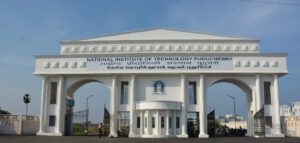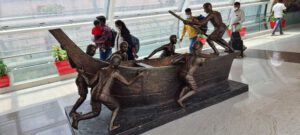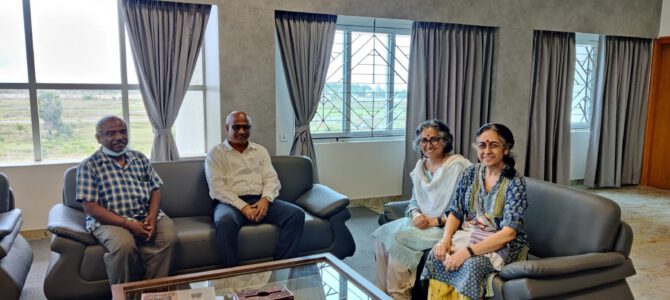We were tired. We had got up at 4 AM to pick up Raji ma’am at the Myladadurai railway station. To revive our spirits we stopped to have an excellent breakfast at a restaurant known to Paranjothi sir (the-man-who-knows-everything!). We ordered a variety of dishes: dosa, idly, pongal and puri with the accompanying chutneys and sambar and shared them between the four of us, Raji ma’am, Paranjothi sir, young Vicky who was driving us and myself. An excellent coffee put us further in a great mood!
As we set out to our next meeting – we crossed NIT Puducherry – Paranjothi favourite institute as it was in his favourite hometown of Karaikal!

“Ma’am, let us stop and see the director. This is such a wonderful institute. See how beautiful it is.”
“Paranjothi sir, you can’t just walk into an institute and meet its director. You have to take appointment weeks beforehand.”
“Let him try Shyama” was Raji ma’am quipped.
So, don’t ask me how he did it, but Paranjothi sir did his magic! He explained to the security guard who we were, he talked to the director’s assistant to explain our work and within 15 minutes we were seated in a spacious office.
Dr. K. Sankaranarayanasamy, NIT Puducherry director, was most gracious in granting us audience and it was wonderful to discuss the vision and mission of FIN with him and explain our academic collaborations to him. He was particularly interested in our participatory co-creation approach with respect to frugal innovations and transformation in general.

At one point he asked us:
“You will find this statue in the domestic terminal of Chennai Airport. What do you think of this statue?”
I answered, “I think it’s beautiful” (the most dumb thing to say – as you will soon learn!)
“Look more carefully”, he said. “This boat can never sail. You never put the blunt end of a catamaran into the water. This is such a big mistake.”
“And why did this mistake occur? Because, nobody cared enough to ask any fisherman – look is this the right depiction of the way you set sail?”
“Of course, such mistakes will happen if we all operate in silos. We need to communicate if we want to understand or represent the situations or problems of others. We need to co-create solutions to problems.”
I was stumped and very impressed. We also knew then we were with a kindred mind!
What happened next? We discussed how we could work together in any modest capacity – to do good together. What happened after that? Well, that’s for another post!


